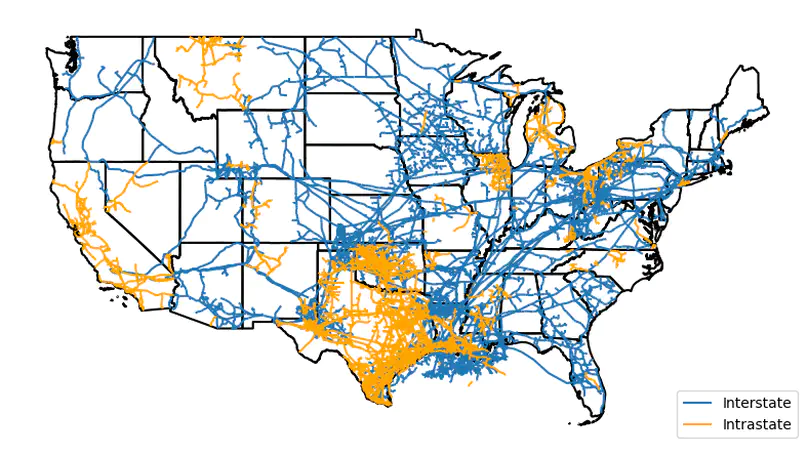Featured

(with Paul Schrimpf)Show/Hide Abstract
This paper investigates regulatory distortion in the incentives for firms to invest in expanding transmission capacity in the United States natural gas pipeline network. Transmission rates for interstate gas pipelines are tightly controlled by federal regulators, who set them so that firms earn a fixed rate of return on capital under projected demand and cost conditions. This rate of return regulation removes the incentive of pipeline operators to exercise local market power by withholding capacity; however, it also distorts firms’ incentives to invest in expanding network capacity. Misallocated capital in a transmission network can lead to inefficiencies and congestion. To ensure that new capital will be desirable, the regulator subjects new capital investment to a stringent approval process. Leveraging a detailed dataset of pipeline regulatory filings, we estimate a dynamic model of the firms’ investment incentives using a debiased nonparametric machine learning approach. We then construct and estimate a structural measure of the marginal social value of capital that is based on a dynamic model of optimal network investment by a social planner. This measure ties the social value of pipeline capacity to differences in prices across state borders that exceed the marginal cost of transmission, indicating excess demand. We find that in most areas, the incentives of firms to invest in the pipeline network under fixed rates of return exceed the social value of capital. This suggests that some costly approval process surrounding pipeline investment is indeed necessary to realign firms’ incentives to expand the network. While overall the implied investment costs have been close to optimal, at a disaggregated level we find evidence of some systematic deviations from the optimal policy both spatially and intertemporally. We suggest that a welfare-improving reallocation of regulatory costs would be one that streamlines investment approval in the northeast but increases regulatory stringency in the southeast and parts of the west.

(with Luke Boosey)Show/Hide Abstract
We examine behavior in an experimental collaboration game that incorporates endogenous network formation. The environment is modeled as a generalization of the voluntary contributions mechanism. By varying the information structure in a controlled laboratory experiment, we examine the underlying mechanisms of reciprocity that generate emergent patterns in linking and contribution decisions. Providing players more detailed information about the sharing behavior of others drastically increases efficiency, and positively affects a number of other key outcomes. To understand the driving causes of these changes in behavior we develop and estimate a structural model for actions and small network panels and identify how social preferences affect behavior. We find that the treatment reduces altruism but stimulates reciprocity, helping players coordinate to reach mutually beneficial outcomes. In a set of counterfactual simulations, we show that increasing trust in the community would encourage higher average contributions at the cost of mildly increased free-riding. Increasing overall reciprocity greatly increases collaborative behavior when there is limited information but can backfire in the treatment, suggesting that negative reciprocity and punishment can reduce efficiency. The largest returns would come from an intervention that drives players away from negative and toward positive reciprocity.